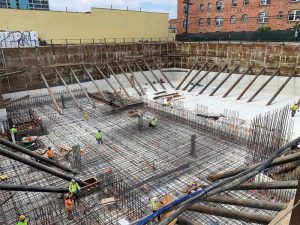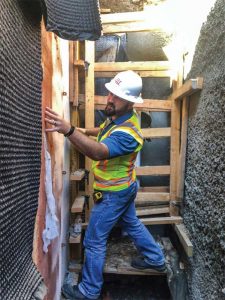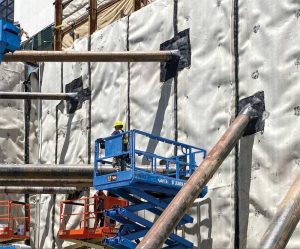Los Angeles Chapter of Construction Specifications Institute Technical Committee

Selection of suitable waterproofing systems can present building project teams with a baffling array of choices. With hundreds of products to choose from, there is a formidable QUANTITY of data to evaluate to make a thorough investigation. Unfortunately, there did not appear to be a standard methodology for making product selections, which is especially daunting for THOSE with limited personal experience. Even seasoned professionals can be stymied when confronted with unusual project conditions.
To address this concern in 2002, the technical committee of the Los Angeles Chapter of the Construction Specifications Institute (LA-CSI) developed a guide to ‘Preliminary Selection of Waterproofing Systems.’
“Our goal was to help the design team make better waterproofing decisions more efficiently,” said Roger A. Cormier, CSI, CCS, who was committee chair at that time. waterproofing was defined in MasterFormat (1995 ed.) as: “Impervious, waterproofing membranes, coatings, and other materials applied to walls, slabs, decks, and other surfaces subject to continuous and intermittent hydrostatic pressure or water immersion.”
The committee’s report was published in The Construction Specifier (August 2002) and in industry newsletters; its widespread circulation indicates it satisfied an important need.
“During two decades since then, there have been numerous changes in waterproofing technology, conditions of use, MasterFormat (2020 ed.), and industry best practices,” said Melisa Sharpe, Architect, CSI, CDT, DBIA, LEED-AP, and current chair of the LA-CSI Technical Committee.
“The technical committee of LA-CSI took this into consideration and revised the document to make it easier to make preliminary product selection decisions about waterproofing systems and to find products that address the project needs.”
The new guide includes a diagram of a structure with typical waterproofing applications. These applications are referenced to a waterproofing application matrix (see page 18) that identifies which types of waterproofing system technologies (along with the MasterFormat section names and numbers in which these materials are typically specified) are generally suitable for application.
Limitations

The diagram and matrix are a useful guide but should not be used as a ‘cookbook’ for comprehensive specification of waterproofing.
Material manufacturer technical representatives, waterproofing consultants, experienced colleagues, and specialty installers can help ‘tailor’ a system to project conditions and assess risks, pitfalls, and reasonable performance expectations. Everyone has their own experience with and biases about waterproofing, and it can be useful to consult multiple parties to obtain a range of options and their pros and cons for a given installation.
Detailing
Manufacturers generally have details, specifications, and installation instructions that define recommendations for their own products. The information, not surprisingly, shows only conditions that are within a proprietary system or terminates generically to adjacent products. Specifications need to discuss interfaces with other waterproofing products, water-resistive barriers, and other systems.
Quality

Performance of waterproofing is limited by the skill and care of its installer. Therefore, specifications should include requirements of the manufacturer and installer qualifications, plus other measures to ensure quality. Helpful documents include shop and installation drawings, mockups, field testing, and observations. Some manufacturers require part- to full-time monitoring of installation as a condition of warranty. manufacturer technical representatives may be able to provide adequate field oversight; otherwise, it may be advisable to retain third-party consultants or inspectors to check work in progress.




